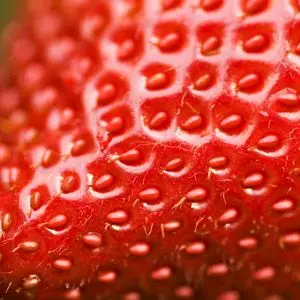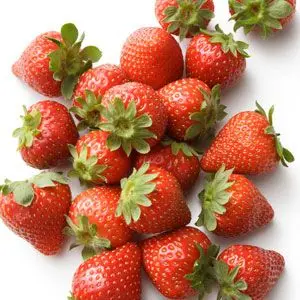Strawberries: A Berry Sweet Way to Spark Joy
It can be added to smoothies, desserts, pies — and to your pet's food bowl! Not only is this fruit rich in flavonoids and antioxidants, but it also contains a component that may help whiten your pet's teeth, for a brighter smile. Find out how to safely give it to your pets.

STORY AT-A-GLANCE
- Strawberries can be given as fresh, healthy pet treats or added to your pet's nutritionally adequate, species-appropriate diet
- They are rich in flavonoids like anthocyanins, which offer antioxidative and antimicrobial activities, and may have protective effects against several diseases, like heart disease, cancer and diabetes
- Strawberries contain fisetin, a flavonoid antioxidant that has neurotrophic, anticarcinogenic and anti-inflammatory effects
- Strawberries also contain an enzyme called malic acid, which acts as a natural whitener for tooth enamel
- It’s best to buy organic varieties of this fruit as opposed to conventionally grown ones
Editor's Note: This article is a reprint. It was originally published July 14, 2020.
Strawberries are quintessential and versatile fruits that people add to many kinds of desserts and fresh fruit salads. If you enjoy these berries, you may wonder: Can your pets have them, too? Read further to find out if it's OK for your dogs and cats to eat them, and what benefits they might get from snacking on these fruits.
Yes, Strawberries Are OK for Pets!
Belonging to the rose plant family, the strawberry (Fragaria)1 is one of the most recognizable and well-loved fruits in the world. But despite its name, strawberry isn’t a true berry — rather, it’s considered an accessory fruit, like apples and pears.2 In human health, strawberries are valued for being abundant in “nutritive and non-nutritive bioactive compounds” that may help promote health and reduce the risk of diseases like obesity, cancer, heart disease and diabetes.3
If you love strawberries, then here’s some good news — you can share these juicy, sweet-tart fruits with your dogs and cats (if they’ll have them). They can be given as fresh, healthy pet treats or added to your pet's nutritionally adequate, species-appropriate diet.
Just make sure you buy organic varieties (more about this later) and slice the fruit in small enough pieces so it will not pose a choking hazard, especially to small-breed dogs. When given as healthy treats, strawberries should make up less than 10% of your pet’s daily caloric intake.
Where Do Strawberries Grow?

Strawberries are native to the Northern Hemisphere, particularly in temperate regions; however, today they are grown all over the world.4 In terms of production, the top three producers are China, the U.S. and Mexico.5

Strawberries Are Rich in Vitamin C and Fisetin
Strawberries are rich in antioxidants, and vitamin C is one of the top nutrients you can get from them. Like most mammals, dogs can make their own vitamin C via their liver,6 but giving them moderate amounts of this nutrient via their diet can still be a boon for their health.
A two tablespoon serving of sliced fresh strawberries can give your pet 12.2 milligrams of this potent vitamin.7 Vitamin C works by scavenging harmful free radicals in your pet’s body.8 It can also inhibit inflammation9 and help slow down cognitive aging.10
Strawberries also contain fisetin, a flavonoid antioxidant that has neurotrophic, anticarcinogenic and anti-inflammatory effects.11 In one study of 40 different food items, strawberries had the highest concentration of fisetin,12 and its promise has been demonstrated for a number of diseases, including diabetes,13 as well as impressive antiaging effects.14
Anthocyanins in Strawberries May Help Support Heart Health
Strawberries are rich in flavonoids, including anthocyanins. This is the most extensive group of water-soluble pigments in the plant kingdom, and they are abundant in berries like blueberries, raspberries and black currants.15 They’re also the reason for the colorful red, orange, blue and violet hues in these plants and other crops.16
According to studies, anthocyanins offer antioxidative and antimicrobial activities, and may have protective effects against several diseases,17 like heart disease,18 cancer19 and diabetes.20 They can also support your pet’s eyesight as well as their neurological health.21
Did You Know?

An average strawberry has 200 seeds — and each seed is considered by botanists to be its own separate fruit!22
Feeding Your Pets Strawberries May Whiten Their Teeth
Giving your pets a few slices of strawberries may also promote good oral health. This is because strawberries contain an enzyme called malic acid, which acts as a natural whitener for tooth enamel. According to a 2018 study, it also “increases saliva production … thereby exerting the anticariogenic property.”23
How to Feed Strawberries to Your Pet
Misinformation about many healthy fruits, vegetables, nuts and seeds abounds on the internet. This is because websites have labeled all risks (such as the risk of overconsumption causing gastrointestinal issues, or choking on too large of pieces or pits) as "toxicities," which isn't true but has managed to confuse millions of pet lovers, nonetheless.
In the case of strawberries, the green stems and unripened parts of the fruit can cause GI upset, resulting in some websites touting them as being hazardous to pet health, which has confused thousands of pet owners about the safety of strawberries. A good rule of thumb is to feed the same parts of fruits and vegetables to your pets as you feed to the rest of your family (so in this case, no green stems or leaves).
One important thing to remember when feeding your pets strawberries is to give them in moderation, as these fruits still contain sugar, which can be detrimental to your pet’s health in high amounts. As a treat, feed a few (sliced) pieces at a time, or cut the fruit up into small pieces and mix into their meals. Remember to only give them fresh fruit — not strawberry jams or purees, as these have excessive levels of sugar and high fructose corn syrup that can be harmful to your pets.
Did You Know?

The earliest records of strawberries came from ancient Rome, around 200 BC. In the 12th century, Saint Hildegard von Bingen stated that these berries were unfit for consumption as they grow too close to the ground, possibly being contaminated by toads and snakes.
It was only in the mid-18th century when this belief was debunked, thanks to a Swedish botanist named Charles Linnaeus who ate a diet consisting of only strawberries, proving them edible.24
Strawberries Top the Dirty Dozen List, so Buy Them Organic
If you want to feed your pets strawberries, it’s best to buy organic varieties of this fruit as opposed to conventionally grown ones. Strawberries rank No. 2 in the Environmental Working Group’s (EWG) Dirty Dozen list, meaning they are one of the most pesticide-laden crops today. According to an Insider article, “EWG testing revealed that 90% of strawberries contained at least one pesticide, and 30% of the crop had traces of 10 or more different toxins.”25
To keep your pet (and your family) safe from these harmful chemicals, opt for organic or “spray-free” strawberries from local farmers markets.
Sources and References
- 1,4 Britannica, Strawberry
- 2 Biology Online, Accessory Fruit
- 3 J Agric Food Chem. 2016 June 8; 64(22): 4435-4449, Abstract
- 5 Atlas Big, World Strawberry Production by Country
- 6 Can J Vet Res. 2006 October; 70(4): 305-307, Abstract
- 7 USDA Food Data Central, Strawberries, raw
- 8 Free Radic Biol Med. 2012 September 1; 51(5): 1000-1013, Abstract
- 9 Drug Des Devel Ther. 2015 July 1; 9: 3405-3412, Abstract
- 10 J Alzheimers Dis. 2012; 29(4): 711-726, Discussion & Conclusions
- 11,12 Antioxid Redox Signal. 2013 July 10; 19(2): 151-162
- 13 PLOS One June 27, 2011
- 14 Front Chem. 2019 October 30; 7: 697
- 15 Ann Ist Super Sanita. 2007; 43(4):369-374, Abstract
- 16 Adv Nutr. 2015 September 5; 6(5): 620-622
- 17,21 Food Nutr Res. 2017 August 13; 61(1): 1361779, Abstract
- 18 Thromb Res. 2005; 116(4): 327-334, Abstract
- 19 Cancer Prev Res (Phila). 2009 January; 2(1): 84-93, Abstract
- 20 J Nutr. 2010 March; 140(3): 527-533, Abstract
- 22 Food Republic, 15 Facts About Strawberries That Everyone Should Know
- 23 Ayu. 2018 April-June; 39(2): 113-117, Discussion
- 24 Mobile Cuisine, Strawberry Fun Facts
- 25 Business Insider, March 20, 2021











